![]()
Originally published by The Meir Amit Intelligence and Terrorism Information Center.
The Double Identity of the IHH
The IHH’s identity is double-faced:
- It is a humanitarian organization, and undertakes a wide variety of humanitarian projects in Turkey and distressed areas, especially among Islamic communities: it sends shipments of food, has a program to help orphans, engages in education, builds mosques, promotes human rights, and provides other kinds of humanitarian and social aid (including in regions controlled by organizations affiliated with Al-Qaeda, in Somalia, for example).[1] This past year the IHH provided aid to Syrian refugees fleeing the oppression the Bashar Assad regime.
- As a jihadist organization, the IHH’s ideology and orientation are radical Islamic, anti-American, anti-West, anti-Israeli, anti-Semitic and pro-Hamas. In the past it aided global jihad organizations in the Balkans, the Middle East and the Caucasus. In 2000 it was involved in the so-called Christmas “millennium attack.” In recent years it has supported Hamas in the Gaza Strip (and attempted to help Hamas in Judea and Samaria). Because of its terrorist nature the IHH has been outlawed by Israel and Germany.
IHH Ideology
The IHH’s ideology is radical Sunni Islamic, anti-West, anti-Israeli and anti-Semitic, similar to the ideology of the Muslim Brotherhood (Hamas’ parent movement). Its fundamental ideological worldview is based on the Naqshandbiyyah, a Sufi spiritual order of Sunni Islam. The order is influential in Turkey (with more than two million adherents) and practiced by senior members of the Turkish government and the ruling AKP party.
The IHH’s worldview was prominent in a speech given by Yildirim on March 31, 2010, two months before the Mavi Marmara flotilla sailed. Speaking before a large audience of supporters in an Istanbul suburb, he laid out the organization’s and his own radical Islamic worldview:[2]
- The Israeli-Palestinian and Israeli-Hamas conflicts are part of a broader, global conflict in which the forces of imperialism and colonialism kill and oppress Muslims all over the world.
- Israel is cruel to Muslims, one example of which was its forcing a million people to leave their homes during Operation Cast Lead [Note: The number is a figment of Yildirim’s imagination, and characteristic of his rhetoric.] Israel is ruled by extremists and Israeli Prime Minister Netanyahu is a psychopath.
- The Muslim world must unite: “Once those who oppose us are out of our way, we will become the population with the greatest religious power.”
- It is extremely important to control Al-Aqsa mosque, and Jerusalem in general. “If Al-Aqsa mosque is Muslim hands, the whole world will be in Muslim hands.”
- Muslims must oppose the “attacks” against them in various global arenas waged by the United States, NATO forces, Israel, India, etc. Palestine is part of a larger picture which includes Iraq, Afghanistan and Chechnya.
- The upcoming flotilla is part of an overall campaign “to isolate Israel,” and “We’ve won as soon as the flotilla is launched.” According to Yildirim, “Look, Israel is losing Turkey, Jordan, and it will be left with no friends in the region.”
IHH’s Ties with the Global Jihad
The IHH was founded in Germany in 1992 during the war in Bosnia by a Turkish religious nationalist movement called Milli Gorüş, affiliated with the Saadet extreme Islamist political party. Initially the IHH was radical, Islamist and jihadist in outlook. Reliable information indicated that IHH operatives were linked to global jihad networks, especially in Bosnia and Chechnya in the 1990s and early 2000s. The connection between Sarajevo and the Gaza Strip — according to the IHH — is shown on a banner hung on the deck of the Mavi Marmara:

Left: The front cover of the book by Mediha Olgun in which the picture appears. It is meant to illustrate the direct line the IHH draws between its involvement in the fighting in Bosnia and its support of Hamas in the Gaza Strip. Right: The banner reads “Dear Gaza we are always with you…Sarajevo, Gorazde, Srebrenica.”
In the 1990s and first decade of the new millennium the IHH maintained relations with Al-Qaeda-global jihad networks and provided them with logistic support. The organization delivered weapons, recruited operatives and gave them passage through Turkey, and provided financial support and medical assistance. The logistic support was given to Muslim terrorist networks in Bosnia, Syria, Iraq, Afghanistan, Chechnya and Uzbekistan. It was reported that Bülent Yildirim was in contact with Shamil Basayev, one of the head Islamist operatives in Chechnya, and that the IHH helped the Chechen operatives by transferring funds and laundering money (which passed to Chechnya through Saudi Arabia).
The information was published in a Danish report in 2006 [download here], issued by the Danish Institute for International Studies. According to the report, which dealt with the role of Islamic charities in international terrorist recruitment and financing, in the past the IHH had maintained relations with Al-Qaeda and global jihad operatives. The report was written by American expert Evan F. Kohlmann, who worked in the past for the FBI and other American agencies.[3]
According to the report, the Turkish authorities began their investigation of the IHH no later than December 1997 following information that top IHH members had purchased weapons from radical Islamic networks. A raid was conducted on the IHH’s Istanbul office and activists were detained. The Turkish security forces found a large quantity of weapons, explosives, instructions for preparing IEDs and a jihadist flag. An examination of the documents found in the offices by the Turkish authorities showed that IHH operatives were planning to participate in jihad activity in Afghanistan, Bosnia and Chechnya.
IHH Involvement in a Terrorist Attack on the United States
The IHH was mentioned during the trial of Al-Qaeda operative Ahmed Ressam, held in the United States in 2000. Ressam was a senior Al-Qaeda operative operating out of Montreal who at the end of 1999 entered the United States in a car loaded with explosives (an estimated 600 kilograms, or 1,200 lbs.). He planned to carry out a mass-casualty attack at the Los Angeles International Airport on New Year’s Eve (the so-called “millennium attack”). The federal prosecution contacted Jean-Louis Bruguière, France’s investigating magistrate in charge of counter-terrorism affairs, who monitored the IHH and was asked to testify as an expert witness. His testimony exposed the IHH as providing Al-Qaeda with forged documents, recruiting operatives and weapons trafficking.

Ahmed Ressam, senior Al-Qaeda operative based in Montreal, who headed the cell which planned to attack Los Angeles International Airport (Photo from FBI History, June 3, 2010).
Bruguière testified as follows:[4]
- Asked what role, if any, the IHH played in the operation of the Montreal [Al-Qaeda] cell, he answered that it played an important one. He said it was an NGO, but a type of cover-up for mujahidin [jihad fighters]. He said it facilitated different forms of recruiting and infiltrating mujahidin into combat [apparently by moving them from place to place], and weapons trafficking.
- When asked how, if at all, IHH was related to the [Al-Qaeda] Montreal cell, he said it was closely related. It was determined, he said, that an operative named Khabu had left for Canada in order to find forged passports, and that he carried the forged documents to the IHH for another member as well, and that there were also other calls that crossed between Canada and Turkey, and Istanbul where IHH is located (pp. 11-12 of his testimony).
- When asked why he considered Adel Boumezbeur’s address to be a conspiratorial flat, he said that there were a lot of phone calls to many different countries, particularly, Turkey and Istanbul, and that he meant primarily calls to IHH (pp. 25-26).
Abkhazian/Caucasian Terrorist Operatives Aboard the IHH’s Mavi Marmara
On August 20, 2010, the Turkish daily paper Hürriyet revealed that an operative named Erdinç Tekir, who was wounded aboard the Mavi Marmara, had participated in the hijacking of the Russian ferry Avrasya in the Black Sea at the beginning of 1996. The attack was carried out by an armed group of Abkhazian/Caucasian radical Islamists who enjoyed the support of Turkish Islamists. Tekir was sentenced to nine years in jail for his involvement in the hijacking but was released after three and a half years, and joined the flotilla to the Gaza Strip as an IHH operative.[5]
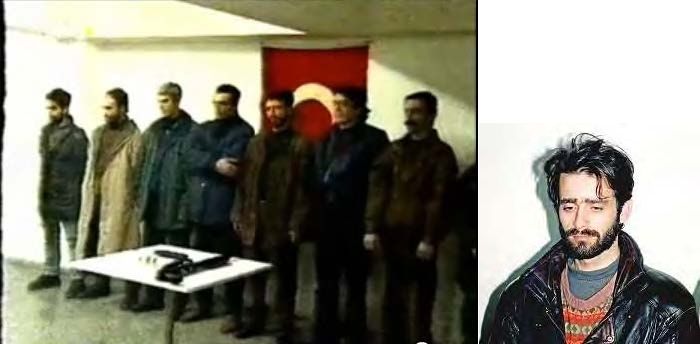
Left: Picture of the terrorists who hijacked the ferry (Photo from YouTube). The leader, Mohammed Tokcan, is standing in front of the Turkish flag. Erdinç Tekir is at the far left. Right: Erdinç Tekir, IHH operative, who participated in hijacking the Russian ferry Avrasya in 1996 (Photo from the Turkish daily Hürriyet, August 20, 2010).
Denouncing the Targeted Killing of Osama bin Laden[6]

Turkish Islamist organizations at a press conference convened at the Reşadiye Hotel in Istanbul to denounce the killing of Osama bin Laden. An IHH representative denounced “American terrorism,” saying that killing bin Laden was clearly an illegal act (Photo from the Velfecr.com website). The banner reads, “We condemn American terrorism.” Third from the left is Osman Atalay, the IHH representative.
On May 5, 2011, a number of organizations met at the Reşadiye Hotel in Istanbul’s Fatih suburb and issued a joint statement denouncing the “American terrorist attack” on Osama bin Laden.[7] Among the organizations were the IHH and Mazlumder, an Islamist Turkish organization whose operatives participated in the Mavi Marmara flotilla.[8] The statement also denounced Turkish public figures, among them President Abdullah Gül, for justifying the American attack on bin Laden.
After the joint announcement, representatives of the various Islamist organizations gave speeches. Among them was IHH representative Osman Atalay, who deals with IHH propaganda and who participated in the Mavi Marmara flotilla.[9] Atalay strongly attacked the United States, accusing it of killing thousands of Iraqi and Pakistani civilians. He claimed a million people were killed in Iraq, that the United States used chemical weapons in Fallujah and broke international law. He said the killing of bin Laden had been clearly illegal and that “American terrorism” had to be condemned.
Information in the Turkish Media about the Investigation of the IHH
According to items appearing in the Turkish media in the middle of June 2012, the Turkish justice system initiated an investigation of IHH head Bülent Yildirim, suspected of transferring funds to Al-Qaeda. The Turkish newspaper Haberturk, quoted by other media,[10] reported that the investigation was being covertly conducted by the offices of the special prosecutor in Istanbul and Diyarbakir. It added that the investigation focused on the IHH’s transfer of funds to Al-Qaeda and on IHH activities in the Middle East (Islamgundem website, June 15, 2012).
IHH head Bülent Yildirim denied his organization had transferred money to Al-Qaeda. He claimed that for years the IHH had operated as a worldwide humanitarian organization. According to Yildirim, it provided assistance to the needy regardless of race, religion or language. He called the media reports “psychological warfare.” He claimed his organization was definitely not under investigation and that he hoped the Turkish authorities would “clarify the issue.” He added that the media reports about an investigation reflected attempts “to defame, isolate, and take revenge on us” (Islamgundem website, June 16; and the Dogruhaber website, June 18, 2012).
IHH Involvement in Supporting Al-Qaeda in Syria
The IHH has been noted as one of the organizations supporting Al-Qaeda and the global jihad in Syria. On January 1, 2014, Turkish soldiers seized an IHH truck in Alexandretta in the Hatay province in Turkey, again raising suspicions against the organization. The truck was found to contain weapons and ammunition being transported to the Syrian border. An investigation into the IHH was initiated by the public prosecutor in Hatay (Longwarjournal.org, January 14, 2014). The IHH, as is its wont, denied everything.[11]
According to the Turkish newspaper Aydinlik, on January 14, 2014, Turkish security forces raided the IHH headquarters in the city of Kilis on suspicion of its supporting Al-Qaeda. According to the report, the aid for Al-Qaeda included weapons, food and medial aid for global jihad fighters in Syria. In addition, the IHH transported Al-Qaeda operatives and weapons in its ambulances. The main crossing point was the village of Atimah, which lies on the Syrian side of the border town of Reyhanli[12] (Aykinlikgazete.com). According to an item in the Turkish media, based on an article in Le Monde, global jihad operatives used IHH ambulances to move from Turkey to Syria. It was also reported that many Al-Qaeda and global jihad operatives were lodged in hotels in Reyhanli, which turned into meeting and assembly locations for the operatives (Cumhuriet.com.tr).
IHH’s Relations with the Turkish Government[13]
The IHH has extensive relations with the ruling Turkish AKP party and with its leadership. The AKP considers the IHH as having social and political influence in Turkey, strengthening its power base and helping it promote Turkish influence and goals beyond its borders (by means of the Turkish Cooperation and Coordination Agency (TIKA). The close relations between the IHH and the Turkish administration gave the Mavi Marmara flotilla governmental capabilities which were unavailable to previous flotillas organized by NGOs. That was manifested by the IHH’s purchasing of the Mavi Marmara from the city of Istanbul (whose mayor belongs to the AKP) and by the diplomatic and media support the Turkish government gave the flotilla.
The relations between the IHH and the upper echelons of the Turkish regime are manifested in three ways:
- In the political-strategic realm, the Erdogan regime collaborates closely with the IHH.[14] They share a common Islamic worldview, the concept that the IHH can be used as a tool to implement Turkish foreign policy, and the IHH’s readiness to serve the current government’s strategy of turning Turkey into an influential regional power, including at the expense of its relations with Israel. That strategy was manifested by the political and practical support received by Hamas (the transfer of funds and other aid to Hamas, support for convoys and flotillas, and hosting Hamas and the Muslim Brotherhood activities on Turkish soil[15]).
- In the realm of internal Turkish politics, IHH is a socio-political powerbase for the AKP, Turkey’s ruling party and, according to several reports, helped it get elected. Their close relations have led to the AKP’s appointing senior members of the IHH to government positions (about a quarter of the IHH senior leadership holds or held positions or were candidates for AKP positions). The AKP gave the flotilla propaganda and moral support and the Turkish media also reported that AKP parliament members planned to board the Mavi Marmara. However their participation was canceled at the last minute.
- On the personal level, IHH leader Bülent Yildirim maintains close relations with the heads of the Turkish regime and is warmly supported by Turkish President (formerly Prime Minister) Erdogan. According to statements from passengers aboard the Mavi Marmara, corroborated by ITIC information, the flotilla set out with Erdogan’s full knowledge and consent, despite the fact that it was clear Israel would not allow the flotilla to reach the Gaza Strip.
Interviewed by the Turkish magazine Anlayis on February 11, 2010, Bülent Yildirim described the influence the IHH had on Turkish foreign policy by saying that “Turkish foreign practices were based on only ethnic considerations for a while. Right now there are multi-faceted practices and everyone concurs that we have much influence on this…Also, it is very evident that recently Turkish foreign practices have had a positive influence on our work as well. Because in a lot of the topics, we have similar views and we act in a similar fashion. There are a lot of issues where we act together in the field. While formal and semi-formal organizations have to pay attention for the balances between various things, NGOs are able to move fast…In short, as much as the NGOs are more active, the countries where the NGOs are based will become more powerful in the world”[16].
The close relations between Turkish government and the IHH enable the administration to moderate and restrain the organization’s activities as it sees fit. That was made clear in the case of the upgraded flotilla which was supposed to set sail on May 31, 2011, on the anniversary of the Mavi Marmara flotilla, an attempt to repeat its so-called “success.” The IHH was supposed to participate and planned to allow the flotilla organizers to use the Mavi Marmara itself. IHH head Bülent Yildirim even gave an inflammatory speech in which he declared that “we are not afraid to die as shaheeds.” However, Turkish political considerations, partially the result of international objections to the flotilla, led the Turkish administration to lower its profile. The result was that two weeks before the flotilla was due to set sail the IHH said in an announcement that “technical problems” would prevent the Mavi Marmara from sailing and that the organization was withdrawing from the flotilla. The IHH’s defection was a blow to the organizers of the upgraded flotilla, which ended in failure.
Profile of IHH Leader Bülent Yildirim
Bülent Fahmi Yildirim was born in Erzurum, Turkey, in 1966 and studied law at Istanbul University. Today he lives in Istanbul and practices law. He is married and has four children. The war in Bosnia and Herzegovina prompted him to co-found the IHH and he eventually became its leader.
Shortly after the organization was founded, Yildirim was suspected of direct involvement in recruiting personnel for purposes of jihad and of sending them to war zones in Muslim countries to acquire military experience. In 2002-2003, led by Yildirim, the IHH played an important role in organizing public protests against the intention of the United States to overthrow Saddam Hussein and of inciting Muslim in Turkey against the West. In December 2004 he called for an end of Turkish cooperation with the United States and Britain, and threatened to organize giant protest rallies at Western consulates in Istanbul.
Bülent Yildirim has a radical Islamic worldview which is hostile to the West (the United States in particular) and Israel. While preparing for the Mavi Marmara flotilla he made anti-American and anti-Israeli speeches. During the sea voyage, in effect he took command of the flotilla and made speeches to inflame the passengers’ emotions. In practical terms he prepared the IHH operatives aboard the Mavi Marmara to fight the IDF, briefing them before the confrontation. He told the IHH operatives and the Turkish Islamists who joined them to “form a human chain and beat the [IDF] soldiers back into the sea with chairs and clubs.”
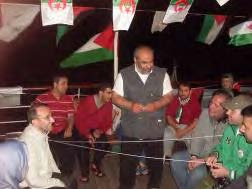
Bülent Yildirim aboard the Mavi Marmara (Photographed seized by the IDF aboard one of the flotilla ships.
During the IDF takeover of the Mavi Marmara Bülent Yildirim was detained by the IDF and taken to Israel, to be released a few days later. On his return to Turkey he did not deny that he and his operatives had behaved violently towards IDF soldiers and even devised a “legal” explanation for it. On June 4, 2010, the Turkish newspaper Zaman reported that Yildirim told a press conference held at the airport on his return that Israeli investigators had asked him whether his operatives had attacked the soldiers with iron bars and axes. He answered, “What I did was self-defense.” He added that “at first our members neutralized ten soldiers. Yes, we took their guns. Legally, you are considered innocent if you take your attacker’s weapon.” He also claimed that the weapons taken from the soldiers were thrown into the sea.
Yildirim has very close ties with the highest echelons of the Turkish government, especially President Erdogan. The IHH exploited those ties to organize the Mavi Marmara flotilla, receiving political support from Turkey as well as help in waging the political-propaganda campaign against Israel both before and after the flotilla. However, when the Turkish administration felt it was in its own best interests not to worsen the situation, the IHH withdrew from the planned upgraded flotilla, despite Bülent Yildirim’s inflammatory statements.
Bülent Yildirim’s Anti-Semitic Remarks
Bülent Yildirim often makes anti-Semitic remarks, using the word “Zionist” as a substitute for “Jewish”:
- On April 7, 2011, at a memorial service held in south Turkey for the terrorist operatives killed aboard the Mavi Marmara, he compared Zionism to a virus. Noting that another flotilla to the Gaza Strip was being organized, he said, “We have only one problem, the virus called Zionism” (Haberler.com website, April 7, 2011).
- At the ceremony held when the Mavi Marmara set sail from Istanbul on May 23, 2010, he gave an inflammatory speech in which he compared Israel to Nazi Germany. He accused Israel of, among other things, building concentration camps for the Palestinians, saying that “Israel acts the way Hitler acted against the Jews. Hitler built concentration camps in Germany. Today the Zionists are building concentration camps in Israel” (IHH website in Turkish, May 23, 2010).[17]
- On November 14, 2010, Bülent Yildirim was interviewed by the Turkish Islamist paper Star, and spoke at length about the Mavi Marmara. Asked to comment on a proposal put before the Congress to declare the IHH a terrorist organization, his answer focused on the claim that “the United States is ruled by Zionism.”[18] He said the following:
- The proposal to designate the IHH as a terrorist organization was born following the Mavi Marmara incident and was the initiative of Jewish Congressmen. It demonstrated, he said, how much influence Jews had on life in the United States and to what extent they were able to enslave that country. Collecting signatures in the Congress to submit the proposal demonstrated better than anything else “the dirty face” of the Congress. According to Yildirim, if the initiative were passed, it would expose “the dirty face of the Zionists in the U.S.”.
- Bülent Yildirim noted that the Zionists were fond of saying, “Give us the money of any country, and we will make sure to pass any laws we see fit, thus running that country.” He added that, under the system used in the United States, “The funds which the Zionists provide allow the election of the senators and the ministers.” President Obama, he said, was about the situation, and consequently in the UN the United States, “has positioned itself with the occupying, unjust, and dishonest Zionists.” He further added, “Therefore, Obama, during his term, can allow himself to be enslaved by the Zionists.”
- The IHH, he said, would not cooperate with the American Congress. “Ours is the right way. The whole world knows we are right.” According to Yildirim, the Zionists had lost some of their power in the United States, while the Muslims, despite the hardship and torture they underwent, represented Islam in a respectable manner. Israeli-influenced American media took Israel’s side, as usual. However, “Alternative United States media have gained a kind of power they never had before.” He also said that the ever-increasing human rights organizations were able to deal with Israeli manipulations.
- Bülent Yildirim was then asked about the measures he deemed necessary to deal with the “world media,” which also supported Israel and criticized the IHH. He responded with anti-Semitic incitement, saying that “Zionism” ruled the world in four spheres: the drug industry, the food industry, the weapons industry, and the media. The Zionists, he said, bought media around the globe, that was “how they handled world media.”
IHH Support for Hamas
The IHH regards the Israeli-Palestinian conflict from a radical Islamic point of view, and identifies completely with the Palestinians’ maximalist demands. It regards the State of Israel as “occupied lands,” rejects the two-state solution, and represents Israel as oppressing the Palestinians and the Israeli Arabs.[19]
The IHH collaboration with Hamas is based on their similar radical Sunni Islamic ideologies. In recent years the IHH has strengthened its ties with Hamas and the Muslim Brotherhood. In November 2009 the organization sent a representative named Izzat Shahin to Judea and Samaria to support Hamas’ civilian infrastructure (Hamas charitable societies in Hebron and Nablus). He was detained by Israel and deported on suspicion of having funded terrorism and supporting Hamas. Another representative, Mehmet Kaya, was sent to the Gaza Strip and is very active in helping Hamas, and what was formerly the de-facto Hamas administration. During the past few years the IHH has also helped the Muslim Brotherhood and other extremist Islamist groups hold meetings and conferences in Istanbul, where they promoted the path of jihad.
IHH support for Hamas is manifested in a number of ways:
- Through economic aid to what used to be the de-facto Hamas administration in the Gaza Strip: In recent years the IHH has assisted Hamas with what is represented as “humanitarian assistance.” However, in reality the assistance is material, political and propaganda support for the Hamas movement. The IHH donates money to the families of shaheeds and supports Hamas’ “educational” system, which brainwashes the younger generation with its radical Islamic concepts and worldview.

Left: Three lines of children at an educational center established with IHH help at a Hamas summer camp in the Gaza Strip, 2006. The children carry signs with the names of Hamas shaheeds, terrorists killed in confrontations with the IDF. Identifying with its shaheeds is part of the Hamas policy of glorifying terrorists and making them attractive to children and adolescents (Photo from page 16 of an IHH pamphlet in Arabic found aboard the Mavi Marmara). Right: An exhibition called “Gaza-Taksim” (Taksim is Istanbul’s main square) held in March 2009 as part of an IHH campaign to support the Palestinians. The banner at the right reads “A thousand blessings to the resistance [i.e., terrorist organizations] from Istanbul to Gaza” (Photo from page 32 of an IHH booklet in Arabic found aboard the Mavi Marmara).

Left: Photo from a Hamas summer camp. The children wear green Hamas caps as they train with weapons. In the background to the right is a large Turkish flag (Turkey became popular in the Gaza Strip after the Mavi Marmara incident) (Safa News Agency, July 31, 2010). Right: IHH leader Bülent Yildirim (left) and de facto Hamas administration head Ismail Haniya in the Gaza Strip (Photo from the Velfecr website, January 7, 2010)
- Through political-propaganda support: The IHH wages a campaign in Turkey and elsewhere to solicit support for Hamas and the path of the so-called “resistance” [i.e., anti-Israeli terrorism]. It also supports Hamas and Muslim Brotherhood activities in Turkey. IHH head Bülent Yildirim has met with senior Hamas figures: in January 2009 he met in Damascus with Khaled Mashaal, head of Hamas’ political bureau, who thanked him for the aid the IHH extends to Hamas. In March 2009 he went to the Gaza Strip to participate in a rally in honor of Turkish Prime Minister Erdogan (in the wake of a verbal confrontation between him and Israeli President Peres at the conference in Davos). In January 2010 Yildirim went to the Gaza Strip again and met with Hamas head Ismail Haniya.
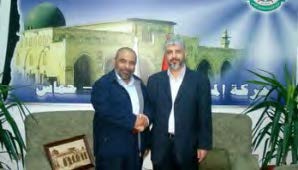
Bülent Yildirim shakes hands with Khaled Mashaal (Picture from the spittoon.org website, January 2009)
IHH Involvement in a Violent Confrontation with the Egyptian Security Forces
The IHH has been involved in various convoys and flotillas whose objectives are to help Hamas and challenge Israel and its closure of the Gaza Strip. In December 2009 it participated in the British-based Viva Palestina’s Lifeline 3 convoy, led by George Galloway, an anti-Israeli British MP affiliated with Britain’s far left. The convoy passed through Turkey, Syria and Jordan, but was prevented from continuing in Egypt (January 2010). The Egyptian authorities refused to allow the convoy’s trucks to enter the Gaza Strip through the Rafah crossing and demanded that some of them enter through Israel. The convoy’s organizers reached an agreement with the Egyptian authorities but its participants, among them IHH activists, refused to comply and were confrontational and acted violently toward the Egyptians.
Despite the arrangement between the convoy and the Egyptian authorities, the convoy activists engaged in a violent confrontation with the Egyptian security forces during which 50 activists and soldiers were injured, 40 of them IHH activists. During the confrontation seven Egyptian soldiers were taken hostage. The incident illustrated the IHH’s violent behavior. In retrospect it presaged the violent, more extreme confrontation with IDF soldiers initiated and conducted by IHH operatives aboard the Mavi Marmara.

Egyptian security force confront Lifeline 3 operatives, including IHH operatives, at El-Arish after the operatives refused to obey orders from the Egyptian administration (Picture from the IHH website, January 2010)
The Central Role of the IHH in the Violent Confrontation Aboard the Mavi Marmara
Preparations for the Flotilla
All our information clearly points to the IHH as the moving spirit and dominant factor behind the Mavi Marmara flotilla, and to the fact that from the beginning it meant to provoke a media-covered violent confrontation with the IDF. The main objective of the IHH and the flotilla’s organizers was not to bring humanitarian assistance to the Gaza Strip but rather to stigmatize Israel and sully its image by provoking it. While the flotilla organizers, including the IHH, often represented themselves as non-violent peace and human rights activists, in the case of the Mavi Marmara the IHH’s violent jihadist character became obvious.
The IHH and the other members of the coalition spent a number of months preparing for the flotilla. The minutes of a meeting held on May 16, 2010 by the IHH and the other participating organizations were found aboard the Mavi Marmara. According to the document, decisions about protecting passenger security were left to the discretion of the ships’ captains. In effect, the IHH planned and prepared for the violent confrontation, hiding its intentions and preparations from the Mavi Marmara‘s captain and the other flotilla coalition partners.
The Mavi Marmara was carrying 561 passengers, about 60% of whom (353) were Turkish. Prominent among them were activists from the Muslim Brotherhood and other Islamic groups from the Arab-Muslim world. Of the Turks, 91 were IHH operatives or volunteers who had boarded the ship in Istanbul (without submitting to security checks) and Antalya. The IHH activists had a hard core of several scores of violent operatives from their own organization and from other Islamist organizations operating in Turkey allied with the IHH. Statements from IDF soldiers who boarded the ship and a wealth of video-taped material indicate that the violence employed by the IHH operatives against the IDF was not spontaneous, but had been planned and organized in advance by dozens of IHH operatives and their supporters. They had a well-defined internal hierarchy and IHH operatives kept separate from the other passengers.
They were in charge of handling matters aboard the ship from the moment it set sail from Istanbul, organized the rally during the wait in Antalya, and had final, complete control of events on board.

The Mavi Marmara, the IHH flagship of the flotilla decorated with the Turkish flag (Picture from the mycatbirdseat.com website, May 22, 2010).
Preparations for the violent confrontation with the IDF included separating the other passengers from the hard core of IHH operatives by sending them below decks. IHH guards were posted in the passageways to keep the other passengers from mounting to the upper deck. The movements of the ship’s crew were also limited and they needed IHH permission to pass from one area of the ship to another, that is, the ship’s crew had no control over what happened on board. The situation aboard ship as described above was backed in Israel by Mahmut Tural, the Mavi Marmara‘s captain, and the first mate, Gokkiran Gokhan, both of who stated that IHH operatives did not allow people they did not know to move around the ship.
IHH preparations included dividing the operatives into combat groups of three and four, stationing them in previously defined positions, distributing equipment and weapons and briefing them. They were given walkie-talkies (as they boarded the ship), took control of the upper deck, and established a kind of war room. Two hours before the violent confrontation a briefing was given by IHH leader Bülent Yildirim, who was aboard the ship with other leaders of the organization and commanded all the operatives. The IHH operatives wore bulletproof vests (stamped with the Turkish flag) and gas masks. Several hours before the IDF forces boarded the ship they were also given night vision equipment and a large quantity of cold weapons prepared beforehand and improvised during the voyage (knives, axes, chains, iron rods, hammers, etc.).

Left: By the time the IDF soldiers boarded the ship the “passengers” (i.e., the operatives) had completed their preparations. They wore life belts and gas masks, and used iron rods and wooden clubs to resist the soldiers (Pictures and text from the book by Şefik Dinç, a Turkish correspondent who participated in the flotilla)[20]. Right: Operatives hold clubs and prepare for the confrontation. In the center there is a bundle of clubs waiting to be unwrapped and distributed.

Left: Operatives armed with clubs improvised from the ship’s railing wait below decks (Picture by Adem Ozkose for Reuters, May 31, 2010). Right: Operative holds an improvised club (YouTube).

According to the caption, training exercises were held aboard the ship in preparation for a possible confrontation. They included briefing the operatives about putting on gas masks and life belts and how to oppose a raid. One of the operatives brought a sling shot with him and shown at target practice[21] (Photos from The Bloodstained Mavi Marmara).
Weapons Found Aboard the Mavi Marmara
The following are a few of the examples of the weapons found aboard the Mavi Marmara, prepared in advance for the violent confrontation with the IDF:
- 100 iron bars of varying lengths to be used as clubs. They were hacked off the railings of the ship’s deck. Seven circular saws were brought up on deck to saw the railings and chains into lengths that could be used as weapons.
- 50 wooden clubs improvised from materials found aboard the ship. In addition there were standard clubs loaded on board and rolled in blankets to hide them.
- 200 knives of various sizes, most of them taken from the kitchen and the ship’s six dining areas. In addition, dozens of bundles of non-kitchen knives with blades of 18 centimeters (about 7 inches) were also found.
- 20 axes taken from fire-fighting stations aboard the ship.
- A number of Molotov cocktails.
- 100 ordinary tools which could be used as weapons.
- 100 cans of pepper spray.
- Sling shots of various types. Some of them were found inscribed with the word “Hizbollah.” 1,500 marbles, metal shot, stones of various sizes, nuts and bolts were also found.

Left: Marbles and metal shot, ammunition for the slingshots (IDF Spokesman, June 3, 2010). Right: Some of the slingshots found aboard the ship. One of them is inscribed with the word “Hizbollah.”
Other aggressive equipment found aboard the Mavi Marmara:
- 150 bulletproof vests, some of them ceramic of the type used by regular armies. They were stamped with the red Turkish crescent, and were also meant to be worn by the embedded correspondents.

Ceramic bulletproof vests worn by the hard core of IHH operatives. They are stamped with the red Turkish crescent (IDF Spokesman, June 3, 2012)
- Optical equipment, including four telescopes, 20 pairs of binoculars and four sets of night-vision goggles.
- Communications equipment, including a large number of walkie-talkies for the use of operatives in their combat positions. According to ITIC information, every IHH hard-core operative had an active communications device during the voyage. According to the statement of a ship’s officer the crew also received such devices but they operated on a frequency different from that of the IHH devices.
- 50 smoke flares.
- 300 gas masks and 200 additional filters: according to statements from an Israeli Naval officer, the operatives aboard the ship wore gas masks during the fighting.
- 150 head lamps.
- Diving equipment: Diving equipment found aboard the Mavi Marmara included four full diving sets (fins, masks, wet suits and oxygen tanks), as well as two spear guns. In ITIC assessment, some of the equipment, including the guns, was not part of the ship’s original gear, but were added in case the Israeli Navy tried to damage the ship below the water line.
Psychological Preparation for the Violent Confrontation
During the voyage the activists aboard the Mavi Marmara, especially the hard core of IHH operatives, underwent psychological preparation for fighting. They listened to sermons and extremist Islamic speeches given by IHH leader Bülent Yildirim supported by Islamist clerics, among them Sheikh Raed Salah, head of the northern branch of the Islamic Movement in Israel, and Yemeni cleric Sheikh Muhammad Nasser al-Hazimi al-Idrisi.

Left: Sheikh Raed Salah speaks during the voyage. Right: Bülent Yildirim delivers an inflammatory speech to the hard core of IHH operatives on the upper deck of the Mavi Marmara.
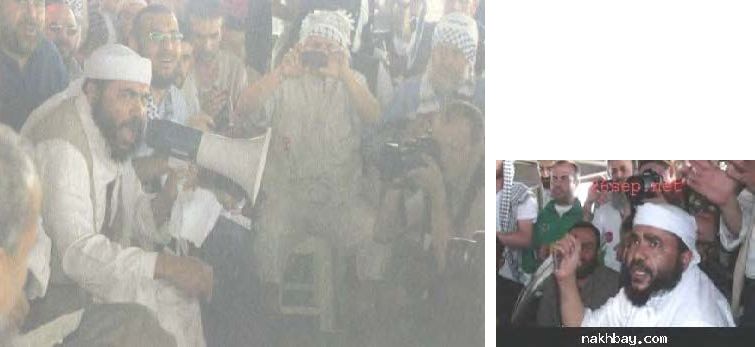
Left: Yemeni cleric Sheikh al-Idrisi, preparing hearts and minds to attack the IDF (Photo from The Bloodstained Mavi Marmara). Right: Sheikh al-Idrisi during the sea voyage.
Several hours before the IDF forces boarded the boat and as the operatives were being organized and weapons prepared, the operatives on the upper deck began shouting battle cries to encourage those who were supposed to participate in the violent confrontation. The IDF found several videos documenting the incidents, including cries of “Khaybar Khaybar, Jews” (a reference Muhammad’s slaughter of the Jews of Khaybar in the Saudi Arabian peninsula in 627 AD), and “a million shaheeds are on their way to Jerusalem.”
In response to Israeli Navy requests to evacuate the ship (before the soldiers boarded the Mavi Marmara) the public address system of one of the ships was used to issue a refusal and declare the flotilla’s determination to continue to the Gaza Strip. Shouts were heard of “Shut up and go back to Auschwitz” and “We are helping the Arabs resist the United States, don’t forget September 11.”
Fighting the IDF
The IDF force which boarded the Mavi Marmara was met with organized opposition from dozens of operatives (IHH and others) led by Bülent Yildirim. Their motivation was high, they were armed with knives, clubs, axes and chains and well equipped with bulletproof vests, gas masks, pepper spray, headlamps and walkie-talkies. Their deployment and conduct during the fighting indicated that at least some of them had previous military training (with regard to previous briefing, central direction, deployment at designated combat positions, professional know-how for operating military equipment and weapons, and knowledge of warfare tactics).

Picture from the book by Şefik Dinç. The caption reads “Bülent Yildirim as the Israeli Air Force helicopters descended. He holds a walkie-talkie and smiles for the camera.”
In the early stages of the fighting three wounded Israeli soldiers were captured as hostages. They were taken below decks, and en route they were repeatedly and violently attacked, despite their serious wounds. They were beaten with wooden clubs, stabbed, and strangled, and there was a clear and present danger to their lives. Once below decks they did not receive medical attention despite the fact that they requested it. They were saved from death by the presence of passengers who had not been involved in the fighting and of correspondents with cameras, who photographed the beatings and thus kept the Turkish operatives from killing the soldiers. When the captain of the ship used the public address system to announce that the ship had been taken over by the IDF, the three wounded soldiers were brought back up on deck and were received by IDF soldiers.
Statements made by IDF soldiers show that dozens of operatives armed with knives, axes, chains, clubs and possibly a few guns participated in the fighting (totally contradicted by the fabrications of IHH leader Bülent Yildirim during the flotilla, who claimed that “between us we didn’t even have one pen knife”). According to statements made by IDF soldiers, they found themselves fighting dozens of trained operatives whose resistance was completely different from that of the ordinary passengers, who did not participate in the fighting. The operatives had been equipped with weapons and military equipment and fought according to an organized, centrally-directed plan. Their objective was to injure the IDF soldiers and prevent them from boarding the ship, regardless of the cost. During the fighting aboard the Mavi Marmara two IDF soldiers were wounded by gunfire a short time after they boarded the ship; one was shot in the stomach and the other in the leg. Other soldiers attested to the fact that they had been shot at during the fighting.

Turkish operatives aboard the Mavi Marmara beat IDF soldiers with clubs (Pictures taken by the Israeli Navy)
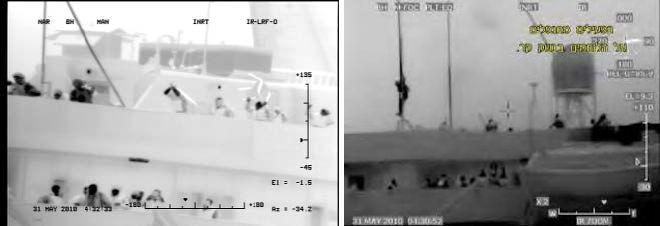
Left: Turkish operatives wait for the chance to beat an IDF soldiers. They are equipped with iron bars and chairs (Picture taken by the Israeli Navy). Right: Turkish operatives wait for the second IDF soldier, after having beaten the first (Pictures taken by the Israeli Navy).
Prominence of IHH Operatives and Their Allies among Flotilla Casualties
Of the nine operatives killed aboard the Mavi Marmara, four were IHH operatives or volunteers. Four others belonged to various Turkish Islamist organizations and political parties. The ninth operative, Furkan Doğan, was a young man with dual nationality and apparently unaffiliated with any Islamist organization. According to an article in the Turkish newspaper Radical on June 16, 2010, before the violent confrontation he had written in his diary that he wanted to die as a shaheed.
An examination of the names of the operatives who died aboard the Mavi Marmara also indicates the following:
- There were thugs among them: one was a former Tae Kwan Do champion, another had worked for an Istanbul sports association and a third had worked as a security guard at IHH meetings. One of the passengers questioned in Israel said that he saw a number of IHH operatives carrying clubs. According to statements from Israeli naval personnel there had been thugs among the operatives fighting against them. Their presence in the hard core of IHH operatives was, in ITIC assessment, part of the plan made in preparation for the confrontation.
- Family members of four dead operatives said the operatives had openly stated their desire to die as shaheeds and had made preparations: two of them had reportedly left a letter or will before they boarded the ship. Another operative who was killed left a video found aboard the Mavi Marmara in which he is seen saying that “I pray to Allah to grant us a good end like the shaheeds.”
- No human rights activists were found among those killed aboard the Mavi Marmara: the absence of human rights activists among the fatalities, neither Western nor from the Arab-Muslim world, was striking. They did not join the organized fighting against the IDF but were kept below decks and did not go onto the upper deck where the fighting occurred.
During the violent confrontation 93 people were injured, all with the exception of one, Turkish. Most of them belonged to the IHH or its Turkish allies. No human rights activist was wounded nor was any activist from a pro-Palestinian organization, with the exception of one Indonesian who sustained minor injuries.
Show Trial against Israel Held in Istanbul Exploited for Vicious Anti-Israeli Incitement[22]
On November 6, 2012, a hearing began in the Istanbul Court for Serious Crimes regarding the case of four senior IDF officers, who were to be tried in absentia. According to the prosecution, they were charged with responsibility for the deaths of nine Turkish shaheeds (martyrs for the sake of Allah) aboard the Mavi Marmara in May 2010.[23] In ITIC assessment, the proceedings were a show trial in which Israel was not represented and which presented only one side of the events, depicted with bias and sometimes untruthfully.
The IHH, which organized the Mavi Marmara flotilla and whose operatives participated in the violent confrontation with the IDF, exploited the opening day of the trial for a vicious anti-Israel hate campaign (which the Turkish administration did nothing to prevent). On the morning the trial opened a mass demonstration, sponsored by the IHH, was held in front of the courthouse. The demonstrators waved Turkish, Palestinian and IHH flags. There were large pictures of the accused Israelis and anti-Israel signs, including some comparing Israel (“Zionism”) to Hitler and Nazi Germany. The demonstrators shouted anti-Israel slogans including “Death to Israel,” “Independence for Palestine,” and “Jihad.” There was also a display of pictures taken aboard the Mavi Marmara. The IHH was careful to invite representatives of the international media to cover the demonstration.

The Turkish hate campaign against Israel. Left: Signs equating Nazism with Zionism at a demonstration in front of the courthouse in Istanbul. Right: “Israel on trial,” an IHH poster marking the beginning of the trial in Istanbul, November 6 (IHH website, November 6, 2012).
The Turkish Islamist media spread the false claim, initiated by the IHH, that Turkish Jews fought alongside IDF soldiers aboard the Mavi Marmara. Yenisafak, an Islamist newspaper affiliated with the Turkish government, published an op-ed column on December 16 entitled “Are there murderers in our midst?” Three days later Hüseyin Oruç, deputy IHH president, interviewed by the small Islamist Kanal A TV station, made the false claim that five of the IDF soldiers who belonged to force that took control of the Mavi Marmara were Turkish citizens. He also said that the IHH demanded that the Turkish government and the Turkish intelligence service (MIT) locate the five Jews and bring them to trial. Following a protest by the American-based Anti-Defamation League (ADL), the Turkish ministry of the interior issued a statement intended to moderate the damage to its image. It again took the familiar Turkish government stand that for centuries Turkey has provided a safe haven for the Jews and that it regards anti-Semitism and racism as a crime against humanity.
![]()
Notes:
[1] For further information see the November 5, 2011 ITIC bulletin, “The Turkish organization IHH provides humanitarian assistance to the famine-stricken regions of Somalia. In September its activists coordinated with Al-Shabaab, an organization affiliated with the global jihad, without authorization from the Somali government, an example of IHH’s dual nature as both a humanitarian and an extremist Islamist organization.”
[2] The full text of the speech and an analysis can be found in the September 5, 2010 bulletin “In a speech given by IHH leader Bülent Yildirim two months prior to the Marmara flotilla, he presented a radical Islamic ideology with anti-West and anti-Israeli motifs.”
[3] For further information see the May 31, 2010 bulletin “A Danish research institute exposes the links the Turkish organization IHH had with Al-Qaeda and global jihad networks.”
[4] United States of America VS. Ahmed Ressam AKA Benni Norris, reporter’s Transcript of Proceedings, LA California, testimony16.pdf, April 2, 2001.
[5] For further information see the August 26, 2010 bulletin “Erdinç Tekir IHH operative wounded aboard the Mavi Marmara, participated in the 1996 terrorist attack on the Russian ferry Avrasya to bargain for the release of Chechens from Russian prison.”
[6] For further information see the May 18, 2011 bulletin “The IHH, which plays a central role in organizing the upcoming flotilla to the Gaza Strip, joined Turkish Islamist organizations in denouncing Osama bin Laden’s killing by America.”
[7] Velfecr.com website.
[8] Mazlumder (“Organization of Human Rights and Solidarity for Oppressed People”) was established in 1991 and is considered the strongest and best organized human rights organization in Turkey. It is also considered a front for an extremist Muslim organization. Under previous governments its activities were monitored and it was subject to searches, its branches were closed and it was indicted by the office of the Turkish attorney general. Five of its operatives were aboard the Mavi Marmara.
[9] Osman Atalay, born 1963, is responsible for IHH publications and writes articles for the organization. He joined the Mavi Marmara at the port of Antalya.
[10] The item was quoted by Hürriyet and appeared on the Islamic website Islamgundem.
[11] The IHH secretary general protested the arrests, claiming it was an attempt to present the IHH as having ties to terrorist organizations (Longwarjournal.org, January 14, 2014). Turkish Deputy Prime Minister Bülent Arinc rejected the accusations, claiming the IHH was a legal organization which, to the best of his knowledge, engaged in peaceful humanitarian activities (Aa.com.tr, January 16, 2014).
[12] On May 11, 2013, there was a terrorist attack in Reyhanli in which 47 Turks were killed. Turkey accused Syrian intelligence of responsibility for the attack. The Syrians denied the allegation.
[13] For further information see the January 24, 2011 bulletin “The Turkish IHH, which has a record of supporting terrorist groups, has close relations with Turkey’s AKP government. The Turkish regime gave it governmental support, including logistic and political propaganda assistance for the Mavi Marmara flotilla.”
[14] On June 8, 2010, the popular Turkish opposition newspaper Hürriyet wrote that despite the fact that IHH was classified as an NGO, it was really a GNGO, that is, a governmental non-governmental organization. June 7, 2010.
[15] For further information, see the July 11, 2010 bulletin “Internal Turkish criticism of the Islamic regime for enabling Hamas and the Muslim Brotherhood to conduct political-propaganda activity on Turkish soil and sway public opinion against Israel and the West.”
[16] From “Turkish-Hamas Relations: Between Strategic Calculations and Ideological Affinity” by Dalia Lindenstrauss and Süfyan Kadir Kıvam,, The Institute for National Security Studies, Strategic Assessment, Volume 17, No. 2, July 2014.
[17] The concentration camps were mentioned during the Mavi Marmara flotilla when it was said that the Gaza Strip was under closure and could not be entered. The speakers for the various ships responded with remarks like “Go back to Auschwitz” (in English).
[18] For further information see the December 12, 2010 bulletin “IHH leader Bülent Yildirim gave an interview focusing on the U.S. intention to designate the IHH as a terrorist organization and on the Mavi Marmara incident.”
[19] For further information see the December 8, 2010 bulletin “IHH publications describe the support the organization gives the Palestinians, especially the Gaza Strip. They illustrate IHH’s worldview, hostile to Israel and supporting the Palestinians’ maximalist demands.”
[20] The Bloodstained Mavi Marmara by Turkish writer Şefik Dinç is a fairly balanced first-hand account of the events aboard the ship. He did not hesitate to describe the extreme violence employed by the IHH operatives or criticize the Turkish government for not preventing the flotilla from sailing.
[21] A large quantity of sling shots were prepared and brought on board the ship as well, and in addition marbles, stones, nuts and bolts has also been prepared in advance as ammunition.
[22] For further information see the November 13, 2012 bulletin “An Istanbul court holds a show trial of Israelis accused of responsibility for the deaths of nine Turkish operatives aboard the Mavi Marmara. The IHH, whose operatives waged a violent attack on the IDF, is exploiting the trial for hate propaganda and plans to use it for international lawfare.”
[23] The nine Turkish citizens killed aboard the Mavi Marmara were not innocent civilians, but operatives belonging to the IHH and other radical Islamist organizations. For their identities see the June 20, 2010 ITIC bulletin “Almost all of the casualties on board the Mavi Marmara were fully identified as members of Turkish Islamist organizations, most of them of a radical and anti-Western nature.”



 RSS
RSS




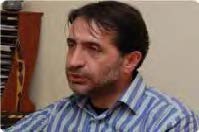






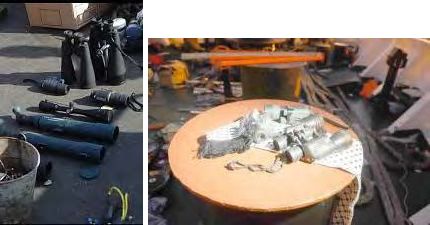


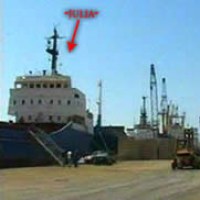

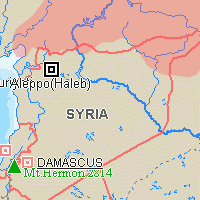
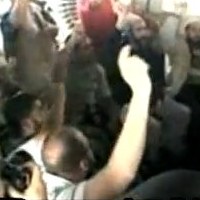





[…] For a profile of the IHH, see the appendix here. […]